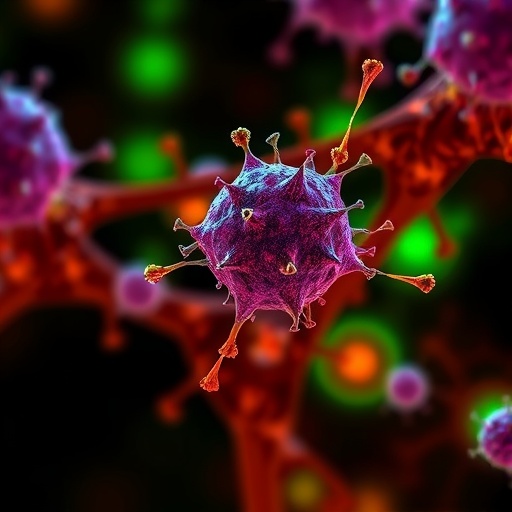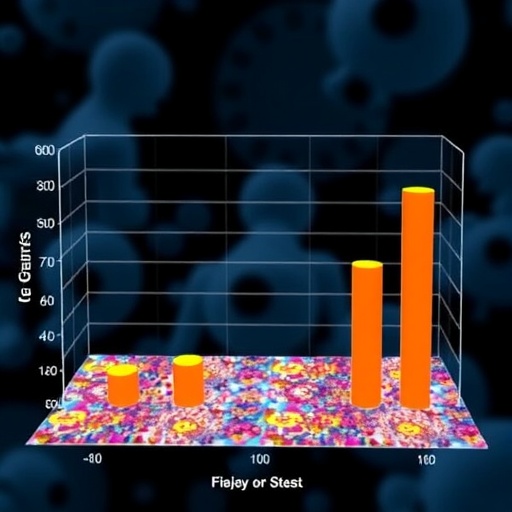In a groundbreaking study that could revolutionize the understanding of tumor-immune interactions, researchers have unveiled a previously underappreciated role of immature neutrophils in cancer progression. Contrary to the prevailing focus on mature neutrophils within the tumor microenvironment, this new research highlights the immunosuppressive and tumor-promoting capabilities of neutrophils in the myelocyte and metamyelocyte stages—developmental intermediates traditionally considered transient and functionally inert. The study not only challenges current dogma but also offers promising avenues for targeted cancer immunotherapies by redefining key cellular players in the tumor immune microenvironment (TIME).
Neutrophils, long known as the first responders to infection and inflammation, have increasingly been recognized for their multifaceted roles within tumors. Yet, their heterogeneity, especially regarding developmental stages, has rarely been dissected in human cancers. The prevailing models often lump neutrophils into a homogenous population, obscuring potential functional differences tied to their maturation. This comprehensive investigation aimed to systematically separate neutrophils from human and mouse sources into three developmental stages: promyelocytes (PM), myelocytes and metamyelocytes (MC & MM), and band and segmented neutrophils (BD & SC). Such stratification allowed the authors to pinpoint unique phenotypic and functional signatures within tumor-infiltrating neutrophils (TINs).
One of the most striking discoveries was the predominance of MC & MM-stage neutrophils in human bone marrow, a pattern notably absent in murine models. This finding underscores a significant species difference in neutrophil ontogeny and their roles within tumor biology, cautioning against direct translation of murine neutrophil data into human contexts. The human MC & MM neutrophils exhibited profound immunosuppressive properties, actively dampening anti-tumor immune responses and fostering a microenvironment conducive to cancer cell survival and growth. This contrasts with the more mature neutrophil subsets, which appeared less effective in modulating tumor immunity.
.adsslot_YFCOdnDLlW{width:728px !important;height:90px !important;}
@media(max-width:1199px){ .adsslot_YFCOdnDLlW{width:468px !important;height:60px !important;}
}
@media(max-width:767px){ .adsslot_YFCOdnDLlW{width:320px !important;height:50px !important;}
}
ADVERTISEMENT
Expanding their scope beyond the bone marrow niche, the researchers performed an extensive survey of TINs across seventeen distinct cancer types in patients. Astonishingly, MC & MM-stage neutrophils constituted the dominant immune cell subset infiltrating tumors. This universal presence across diverse malignancies suggests a conserved and therapeutically relevant mechanism where these immature neutrophils orchestrate immunosuppression, thereby facilitating tumor progression and immune evasion. The identification of this conserved subset across cancers opens new possibilities for pan-cancer biomarker development and targeted interventions.
To mechanistically probe the dynamics of these neutrophil subsets in vivo, the team engineered a novel humanized mouse model, the NOD/ShiLtJGpt-Prkdc^em26Cd52Il2rg^em26Cd22/Gpt (NCG)-Gfi1^−/− human immune system (HIS) mouse. This model supports superior human TIN reconstitution, enabling detailed functional studies within a controlled tumor-immunity interface. Tumor-bearing NCG-Gfi1^−/− HIS mice exhibited a notable expansion of MC & MM neutrophils within the bone marrow, mirroring clinical observations and validating the model’s utility in preclinical research. The model thus provides a powerful platform for investigating the biology of these immature neutrophils and testing therapeutic strategies aimed at modulating their effects.
Advancing their investigation, the authors utilized single-cell RNA sequencing to dissect the molecular profiles of neutrophils isolated from human bone marrow and tumor samples. They identified two robust markers, CD63 and Galectin-3, that distinctly characterize MC & MM neutrophils, setting them apart from other neutrophil populations. These markers allow precise identification and isolation of this subset, facilitating subsequent functional assays and offering potential molecular targets for diagnostic and therapeutic development.
Leveraging these insights, the study introduced an innovative therapeutic strategy involving Fms-like tyrosine kinase 3 ligand (Flt3L) to induce the trans-differentiation of MC & MM neutrophils into monocytic cells. This trans-differentiation effectively reprogrammed the immunosuppressive neutrophils into cells capable of supporting anti-tumor immunity. Treatment with Flt3L in the NCG-Gfi1^−/− HIS mouse model led to significant tumor control, illustrating a novel immunotherapeutic avenue that targets neutrophil plasticity rather than solely focusing on depletion.
This paradigm-shifting work highlights the importance of developmental stage-specific neutrophil functions in cancer immunity, illuminating the complexity of TINs beyond their traditionally ascribed roles. By linking immature neutrophils with tumor-promoting activities, the study provides a compelling rationale for the development of stage-specific neutrophil biomarkers and interventions, potentially overcoming the limitations of existing therapies that target mature neutrophils with limited clinical success.
Moreover, the discovery holds profound implications for the broader immuno-oncology field, where harnessing or modulating the tumor microenvironment remains a key challenge. Understanding the ontogeny and functional plasticity of neutrophil subsets offers a refined lens through which to view immune suppression, potentially improving patient stratification and response prediction in cancer immunotherapy trials.
Importantly, the authors’ creation of the humanized NCG-Gfi1^−/− mouse model represents a significant methodological advance, breaking the translational barrier that often hampers preclinical neutrophil research. This model faithfully recapitulates human neutrophil development and function within tumors, providing a critical tool for future investigations and rapid therapeutic screening.
The identification of CD63 and Galectin-3 as specific markers for MC & MM neutrophils not only advances the basic biology of these cells but also opens prospective pathways for diagnostic innovation. These markers could serve as circulating biomarkers or immunohistochemical tools to detect and monitor immunosuppressive neutrophil burdens in patients, enabling real-time assessment of tumor immune landscapes.
Finally, the innovative therapeutic approach using Flt3L underscores the plasticity and potential for re-education of the myeloid compartment within tumors. By converting detrimental immature neutrophils into beneficial monocytic phenotypes, this strategy transcends simple depletion and aligns with the emerging concept of immune cell reprogramming in cancer therapy.
In summary, this landmark study elucidates the critical contribution of human myelocyte and metamyelocyte-stage neutrophils to tumor immune evasion and cancer progression. Through meticulous cellular characterization, cutting-edge modeling, and pioneering therapeutic exploration, the research sets the stage for novel biomarkers and immunotherapies targeting this elusive yet influential neutrophil subset. Such insights promise to reshape the future of cancer immunotherapy and inspire intense exploration into the developmental intricacies of immune cells within the tumor microenvironment.
Subject of Research: Human myelocyte and metamyelocyte-stage neutrophils’ role in tumor immunity and cancer progression.
Article Title: Human myelocyte and metamyelocyte-stage neutrophils suppress tumor immunity and promote cancer progression.
Article References:
Liu, W., Shi, T., Lu, C. et al. Human myelocyte and metamyelocyte-stage neutrophils suppress tumor immunity and promote cancer progression. Cell Res 35, 588–606 (2025). https://doi.org/10.1038/s41422-025-01145-0
Image Credits: AI Generated
DOI: https://doi.org/10.1038/s41422-025-01145-0
Tags: developmental stages of neutrophils in tumorsheterogeneity of neutrophils in cancerimmature neutrophils in tumor microenvironmentimmunosuppressive roles of neutrophilsmyelocyte and metamyelocyte functionsmyelocyte neutrophils in cancer progressionneutrophil maturation and cancer progressionnovel findings in cancerredefining immune players in cancertargeted cancer immunotherapiestumor-immune interactions in cancertumor-infiltrating neutrophils phenotypes





